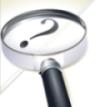Olive leaf extract liquid tinctures can yield the best results - if they are well made.
(You can even make your own!)
By Olive leaf extract liquids, people usually mean ethanolic tinctures which are ethanol-based liquid extracts.
There are also glycerol based extracts (see here) and liquid extracts made by percolation, each with their own best uses.
You can now also get softgel capsules containing glycerine-based olive leaf extract liquid giving the benefits of a liquid without the taste.
This page deals mainly with olive leaf tincture advantages and strengths. For an overview of ethanolic tinctures click here.
Ethanolic Tinctures
Mothers often question why olive leaf extract liquids often contain alcohol, as the thought of giving it to a child seems wrong.
To answer that, the tinctures are usually given for a specific purpose in small quantities rather than as a daily tonic.
The good ones are strong to achieve a preventive or therapeutic goal over the short term as one would give medicine.
If they need to be given for a few weeks then the alcohol can be largely flashed off by pouring boiling water into the tincture.
To get the same results as a strong tincture with a water/glycerol based product one would need to take it by the tablespoon.
However for a child with cancer for example I would not give the tincture to avoid the intake of any alcohol at all.
The points below will help to illuminate the use of ethanolic tinctures.
The properties of ethanol highlight its suitability as a medium for storing and distributing phytochemicals throughout the body.
- Ethanol is a natural alcohol formed when yeasts ferment the carbohydrates occurring in grapes, apples, malt etc. in the absence of
oxygen.
Small quantities of ethanol (ethyl alcohol) are often found in overripe fruit which the human body can comfortably process. - When ethanol reaches a high enough concentration (about 17%) it acts as an effective preservative killing off most harmful organisms as well as the yeasts that formed it.
- It is extremely efficient in drawing phytochemicals out of the cells of plants.
- It is able to pass into the bloodstream through the mucous membranes of the mouth, the stomach lining as well as the small intestine making it an ideal carrier of dissolved plant chemicals into the blood.
- Ethanol dissolves volatile plant ingredients not soluble in water, including oils, and has a stabilising influence on otherwise unstable substances such as glycosides of which oleuropein is one.
- Finally it is able to pass through cell membranes directly into cells, also crossing the blood brain barrier.
In summary ethanol solution can be made naturally, it strongly draws the active ingredients from plant cells and dissolves them, stabilises and preserves them from oxidation and microbial attack for years, efficiently delivers them into the bloodstream once ingested and possibly transports some of them directly into human cells themselves.
Because olive leaf breaks down into antiviral compounds, ethanol is probably the best medium to transport them where they are needed
in order to block viral activity throughout the body.
This may also be why olive leaf extract liquid reportedly helps with problems such as shingles viruses which evade the body's immune
system by collecting in nerve cells.
Strength of olive leaf tincture:
Olive leaf extract liquid tincture strengths are indicated (a) in mg of leaf or extract used per ml of final tincture, or (b) in mg of oleuropein per dose or (c) as a ratio of leaf used by weight (g) to volume of ethanol solution (ml) in the initial mix.
The oleuropein in the tincture is about one and a half to two times as effective as the same quantity in capsule form.
This is my observation from experience - no scientific evidence, although the above properties would seem to back this up as well.
Ethanolic tinctures absorb approx. 30% better than glycerol based extracts according to some authorities.
Strengths may also be indicated as a ratio of original leaf (in g) to ethanol solution (in ml) followed by a number representing the dilution of alcohol used.
1:2 25% means 1g olive leaves per 2ml of 25% ethanol. (25% = 1 part ethanol to 3 parts water).
The lower the second part of the ratio the stronger the tincture.
Quite often the ethanol percentage is left out, as commercial products generally have sufficient for the purpose which is between about
25% and 40%.
Some typical olive leaf extract liquid tincture strengths
A 1:5 tincture is an average olive leaf tincture and should be relatively cheap.
A 1:2 tincture will be more expensive and better for dealing with colds and 'flu and other infections.
A fortified tincture containing olive leaves and dissolved olive leaf extract can be as strong as 1:0.8 and is effective in lower dosages.
The extract used or the final product may be standardised which then makes it more consistent in strength from bottle to bottle which
is useful for conditions requiring accurate dosing.
It is often preferred by practitioners for this reason.
A few useful notes
If no ratio or quantity is shown on the label, then assume it is at least 1:5 or weaker (1:10).
A top quality standardised tincture will be more expensive than a theoretically equivalent pack of capsules but you should get better results with less.
For best and quickest absorption, when you take a tincture dilute it until it contains approx. 20% to 25% alcohol. Any stronger tends to cause the stomach to move it on to the duodenum whereas at this level it absorbs well through the stomach wall.




Comments
Have your say about what you just read! Leave me a comment in the box below. Note: I can't give medical advice. See dosage page for dosage.